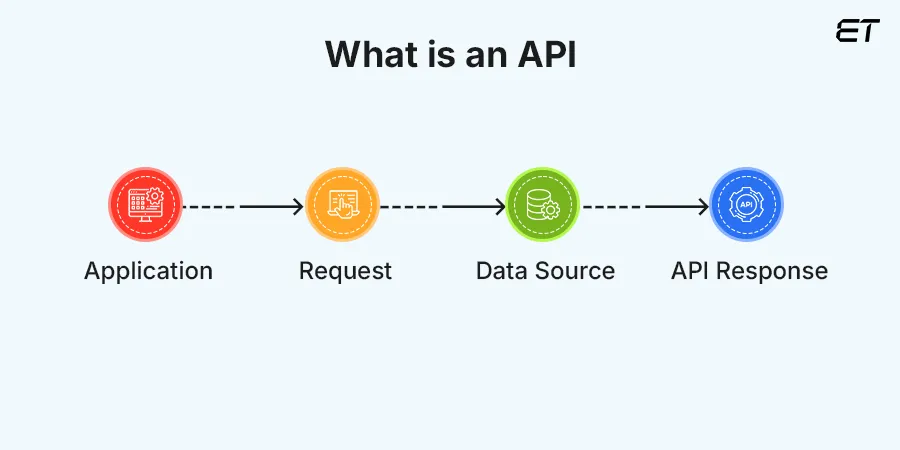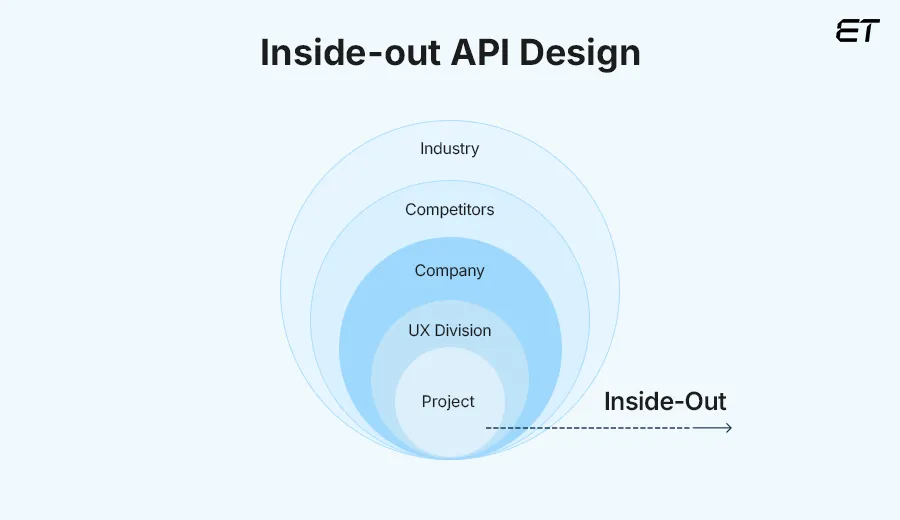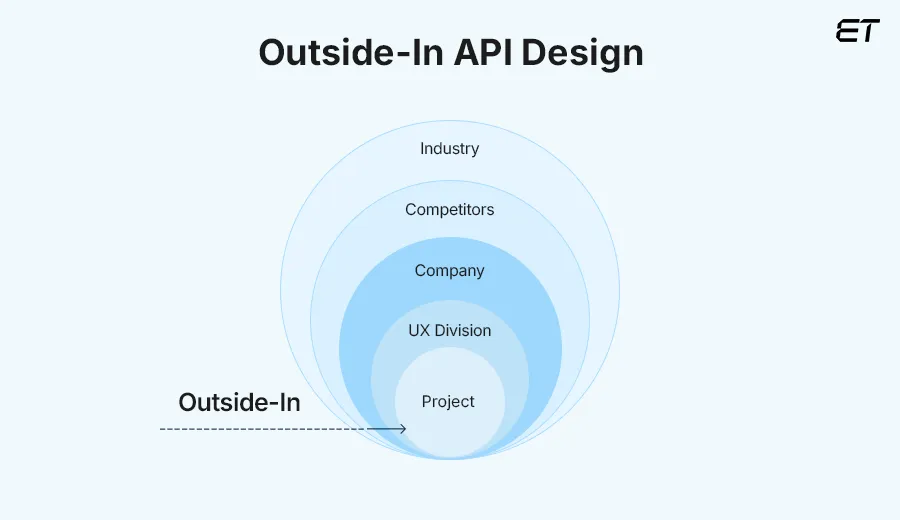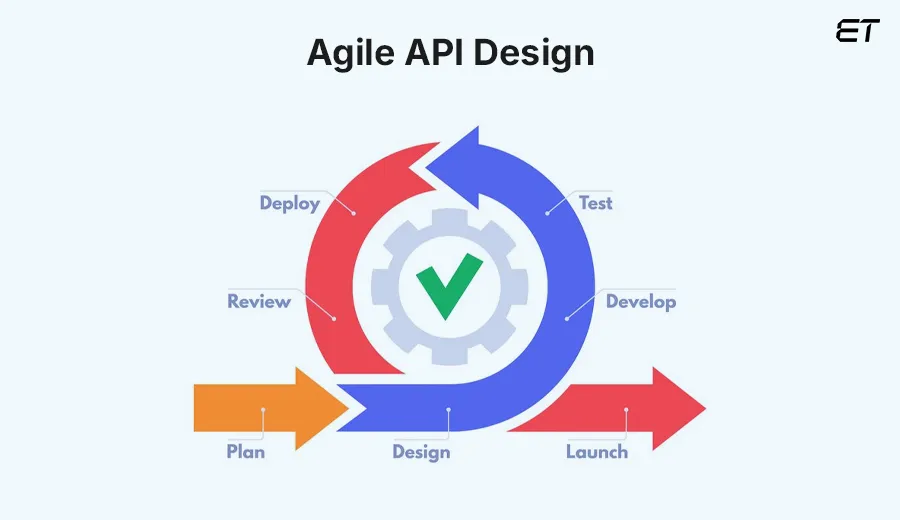
API Design Best Practices in 2025
Let’s face it—APIs used to be a ‘developer thing.’ A technical layer buried somewhere behind the app, quietly making things work. But that’s no longer the case.
Today, APIs are the silent engines behind almost every digital experience your business offers. APIs are everywhere, from mobile apps and partner integrations to data sharing and automation. And when you design them well, they become powerful tools for scaling your operations, accelerating product launches, and unlocking new revenue streams.
But here’s the catch: not all APIs are created equal. Poorly designed APIs can slow your teams, introduce security risks, and frustrate partners. On the other side, a thoughtfully designed API can act like digital glue. It connects your ecosystem, streamlines innovation, and makes it easier for others tox build on what you’ve created.
So, if you’re a C-suite executive, it’s time to look at API design as a business growth strategy. In this blog, we’ll walk through the API design best practices that help you build smarter, more scalable systems that serve your tech teams and your long-term business goals.
Bridge your software with smart APIs to craft powerful integrations with our experts!
What is API Design Best Practices?

API design best practices refers to creating a well-structured and well-documented interface for an application programming interface (API). It involves defining the API’s endpoints, methods, and resources in a standardized specification format, such as OpenAPI or AsyncAPI.
Good API design best practices ensures that APIs are easy to use, adaptable, testable, and well-documented, which benefits both API consumers and producers. By focusing on clear and consistent design principles, API designers can create intuitive and efficient interfaces, facilitating seamless integration and interaction between different systems.
Importance of API Design Best Practices in API-first Development

API design best practices plays a vital role in API-first development, where applications are conceptualized and built with services delivered through APIs. By designing APIs before developing applications, you can ensure that your APIs meet the needs of your consumers and are aligned with your business objectives.
This approach allows you to standardize API patterns that can be reused across your organization, making it an essential part of an effective API governance strategy. Well-designed APIs can accelerate development, improve collaboration, and ensure the final product is robust and scalable.
Brief Overview of API Design Approaches
There are several API design best practices approaches, each with its own strengths and use cases:
- Inside-out API Design

This API design best practices approach starts with the API provider’s pre-existing backend system. It focuses on exposing existing functionalities through APIs, making integrating with the current infrastructure easier.
- Outside-in API Design

This method of API design best practices focuses on designing APIs based on the needs and requirements of external consumers. It prioritizes user experience and ensures that the API meets the specific demands of its users.
- Agile API Design

Agile API design best practices integrates continuous feedback and iterative development by emphasizing flexibility, collaboration, and responsiveness to change. This approach allows for rapid adjustments and improvements based on real-world usage and feedback.
Each API design best practices approach has its own advantages, and the choice depends on the specific needs and context of the project.
API Design Best Practices
API design best practices isn’t just about making two systems talk to each other—it’s about making that communication efficient, secure, consistent, and scalable. When your API design best practices are on point, they’re easier to maintain, safer to expose to partners, and quicker for developers to build on.
Defining API contracts is a crucial step in the API development process. These contracts serve as a comprehensive specification that outlines the resources, data structure, and methods associated with an API.
Whether you’re designing internal APIs or exposing them to third-party developers, following these API design best practices is key to long-term success.
1. Choose the Right API Architecture: REST or GraphQL
Before designing endpoints, you must choose the right API design best practices style. The two most popular approaches are REST and GraphQL.
REST (Representational State Transfer)
- REST uses multiple endpoints mapped to resources (e.g., /users, /orders/123).
- It works with standard HTTP methods (GET, POST, PUT, DELETE).
- It is easy to implement, cache, and scale.
- Following REST API guidelines ensures efficient, scalable, and secure API design best practices.
GraphQL
- It uses a single endpoint.
- GraphQL allows clients to request exactly the data they need.
- It is ideal for mobile and frontend apps to avoid over-fetching.
When Should You Use REST vs GraphQL?
Use REST when you want simplicity, caching, and convention. Use GraphQL when clients need custom data responses or when frontend flexibility is critical.
2. Keep Your Resource Naming Clear and Consistent
The second API design best practices is thatr it should be intuitive. That starts with how you define your endpoints. Rather than thinking in terms of actions, like ‘getUser’, think of APIs as access points to resources, like users, products, or orders.
Properly designing REST API endpoints is crucial to facilitate seamless communication between clients and services. This includes using JSON for data transfer, structuring endpoints with nouns instead of verbs to enhance clarity, and applying security measures like SSL/TLS to safeguard sensitive information.
This approach aligns with REST principles, making APIs more predictable and easier to maintain. You must:
- Use nouns, not verbs: /users, /orders/456
- Stick to lowercase letters and hyphens (e.g., /product-catalog)
- Keep URIs consistent and human-readable
This keeps your API clean, especially when scaled across large teams or third-party partners.
3. Structuring URIs for Relationships
When structuring URIs for relationships, it’s essential to use a consistent naming convention and hierarchy. This approach helps to establish clear relationships between resources and makes it easier for API consumers to navigate the API.
For example, if you have a resource called “orders” and you want to retrieve a specific order, you can use the URI “/orders/{orderId}”.
If you want to retrieve a list of orders for a specific customer, you can use the URI “/customers/{customerId}/orders”.
This hierarchical structure indicates the relationship between customers and their orders, making the API more intuitive and easier to use.
4. Use the Right HTTP Methods
Every API call represents an action, and HTTP provides standardized methods to express them. Consistently applying these methods ensures your API design best practices behaves in a predictable way across different use cases.
Designing and implementing RESTful web services involves best practices for naming endpoints and utilizing HTTP request methods to ensure clarity and effectiveness in communication between clients and servers.
Standard HTTP methods include:
| Method | Use For |
| GET | Fetching data |
| POST | Creating a new resource |
| PUT | Updating a full resource |
| PATCH | Partially updating data |
| DELETE | Removing a resource |
Example:
PATCH /users/123
{
"email": "new-email@example.com"
}
Using these HTTP methods properly minimizes confusion, improves integration time, and aligns with API design best practices. This practice is widely accepted across the industry.
5. HTTP Headers for API Requests
HTTP headers play a crucial role in API requests, as they provide additional information about the request, such as authentication credentials, content type, and caching instructions. Some common HTTP headers used in API requests include:
| API Requests | What it Does |
| Authorization | It is used to authenticate API requests, often with tokens or credentials. |
| Content-Type | It specifies the format of the request body, such as application/JSON. |
| Accept | It indicates the desired response format, helping the server return data in the appropriate format. |
| Cache-Control | It controls caching behavior, which can improve performance by reducing the need for repeated data retrieval. |
| X-API-Key | It is used to authenticate API requests using API keys, providing an additional layer of security. |
By using HTTP headers effectively, API designers can create more secure, efficient, and scalable APIs that meet the needs of their consumers. Proper use of headers ensures that API requests are correctly interpreted and processed by the server, leading to more reliable and predictable interactions.
Power your apps with real-time magic—explore our expert guide to APIs, benefits, and best practices.
6. Version Your APIs for Flexibility
APIs evolve, features improve, bugs are fixed, and client needs change. But breaking existing integrations every time you update an endpoint isn’t an option.
It is crucial for the client request to include specific headers to indicate versioning and the necessary content types that define how data is transmitted over HTTP. This ensures proper communication and data handling between clients and API servers.
Best versioning strategies for your APIs include:
- URI-based: /v1/customers, /v2/orders
- Header-based (for enhanced flexibility): Use Accept headers to define versions
Always communicate version changes and deprecate old versions only after providing sufficient notice. This protects your ecosystem from disruption.
7. Return Clear and Consistent Error Messages
Vague error messages are frustrating and time-wasting. Your API should not just say what went wrong but why and, ideally, how to fix it.
Let’s glance at what all effective error design includes:
- Clear HTTP status codes: 400 (Bad Request), 401 (Unauthorized), 404 (Not Found), 500 (Server Error)
- A helpful message in the response body
- Optional: an error code, timestamp, and link to your documentation
For example, you can use the following code using JSON:
{
"error": {
"code": "INVALID_FIELD",
"message": "The 'email' field is required."
}
}
Well-structured errors reduce support tickets and create a better experience for your developers.
8. Prioritize Developer Experience (DX)
Your API is a product, and developers are your users. If it’s hard to use, your users won’t use it. Developer Experience (DX) directly affects adoption, speed of integration, and satisfaction.
How to Improve Your DX?
- Keep endpoints consistent and intuitive
- Provide sample requests and responses
- Avoid surprises and use clear status codes and error messages
- Offer SDKs or client libraries where possible
- Reduce setup time with quick-start guides and sandbox environments
A seamless DX ensures faster time-to-value and encourages repeat usage.
9. Implement Pagination, Filtering, Sorting, and Query Parameters
APIs shouldn’t return thousands of records in one go, it’s inefficient and slow. Make your API flexible with the right tools to improve performance and usability. Key techniques include:
- Pagination: It breaks responses into pages with parameters like ?page=2&limit=50. Query string parameters allow clients to refine data requests or specify the fields they want.
- Filtering: It lets users narrow down results to more exact and accurate ones. (?status=active). You can use query parameters to specify conditions in API calls.
- Sorting: It allows the ordering of results (?sort=created_at_desc)
These are crucial for frontend apps and data-heavy applications.
10. Prioritize Security from the Start
Security is not any shortcut or a layer you add later; you need to embed it from day one. Your API can be a direct line to sensitive data or backend systems. That’s why security must be proactive, not reactive.
Let’s glance at the must-haves for your API security:
- Use HTTPS to encrypt all data in transit.
- Implement OAuth 2.0 or token-based authentication (not just API keys). JSON Web Tokens (JWT) are particularly effective for user authentication in API access, as they securely transmit information between systems and validate user permissions using the Authorization header.
- Sanitize inputs to prevent SQL injection and other attacks.
- Apply rate limiting and IP whitelisting where needed.
- Monitor and log all activity for traceability.
For a deeper dive, you can refer to the OWASP API Security Top 10 for a better understanding.
Integrate smarter in 2025—discover the top API tools we trust to build seamless software solutions!
11. Prevent Abuse by Rate Limiting and Throttling
To protect your API from abuse or overload, enforce rate limiting, especially for public or partner-facing APIs.
How it works?
- Set request limits per user or token (e.g., 1000/hour)
- Return 429 Too Many Requests when the limit is hit
- Include headers like:
X-RateLimit-Limit: 1000
X-RateLimit-Remaining: 150
Retry-After: 60
This ensures fair usage and preserves system stability.
12. Use Caching to Improve Your API Performance
Speed is user experience. Caching helps your API respond faster by reusing stored data instead of recalculating it every time. Server-side caching can enhance performance by returning cached responses instead of querying the database for requested data.
Below are the ways to use caching:
- ETag headers: Check if the data has changed before responding
- Cache-Control: Define how long a response should be cached
- Content Delivery Networks (CDNs): Distribute cached content closer to users
Example:
Cache-Control: public, max-age=3600
Just make sure not to cache sensitive or user-specific data.
13. Write Clear and Interactive Documentation
Good documentation isn’t a luxury, it’s a necessity. It guides your developers, reduces friction, and shows that your API is reliable and well-maintained.
What good API documentation includes:
- Endpoint descriptions
- Request/response examples (including API responses to improve performance and navigability)
- Error code references
- Authentication details
- Use case guides
You can use tools like Swagger (OpenAPI), Postman, or ReadMe to create interactive and up-to-date docs. Interactive, accurate docs directly contribute to better DX and faster adoption.
14. Use OpenAPI/Swagger for Standardization
OpenAPI (formerly Swagger) is a specification for describing your API in a format both humans and machines understand.
How Does it Help You?
- It enables auto-generated docs
- OpenAPI supports mock servers
- It helps teams collaborate better
- It allows validation and testing early
Example:
paths:
/users:
get:
summary: Get all users
responses:
‘200’:
description: Success
Using OpenAPI brings structure, speed, and clarity to API development.
15. Monitor and Measure API Usage
Once your API is live, your job isn’t done. You need to know how it’s used and where it’s breaking down. Therefore, you need to monitor your API closely for all the following aspects:
- Uptime, latency, and error rates
- Usage trends and spikes
- Abnormal access patterns
Monitoring HTTP requests is crucial to understanding how the API is used and where it may break down. Tools like Datadog, New Relic, and Postman API assist you in monitoring your APIs. They can give you real-time visibility into your API’s performance and reliability.
16. Standardize Design Across Teams
If your organization builds multiple APIs, consistency is crucial. Without it, onboarding becomes slower, documentation gets messy, and integrations break. Therefore, you need to standardize the design across teams to avoid confusion or obstruction among them. Below are some of the governance tips from our side:
- Create an internal API design style guide that emphasizes following RESTful API design principles to ensure consistency and scalability.
- Enforce naming conventions and versioning policies
- Review APIs before production release
- Use linters or CI tools to validate specs
Standardization keeps your API ecosystem clean, efficient, and scalable.
Want to streamline your systems with powerful APIs with our experts?
Wrapping Up!
A well-designed API works silently behind the scenes, enabling seamless integrations, driving your user experiences, and supporting business growth without friction. However, achieving that level of reliability and scalability starts with intent.
Every design decision you make plays a role in long-term success, from choosing the right architecture (REST or GraphQL) to securing your endpoints.
Here’s a quick review of what matters most:
- Choose the right API style based on your use case
- Keep endpoints predictable and resource-focused
- Use HTTP methods and status codes consistently
- Prioritize security, error clarity, and performance
- Make documentation and developer experience a first-class priority
- Monitor, evolve, and govern your API like a product
Ultimately, great APIs aren’t just built, they’re designed, refined, and trusted. And if you do it right, they don’t just power your applications but also open doors to new possibilities.
Connect systems. Empower growth. Connect with our API experts to build seamless digital experiences!
Frequently Asked Questions
1. How to design an API best practices?
API design best practices are:
- Clearly define your API’s objectives, purpose, and target users.
- Use intuitive, standardized, and consistent naming conventions for endpoints.
- Apply proper HTTP methods like GET, POST, PUT, and DELETE appropriately
- Implement version control to manage updates without disrupting users
- Integrate security measures like enforcing authentication, authorization, and data validation
- Create comprehensive documentation that provides clear instructions and examples to your developers
2. What is the golden rule of API design?
The golden rule of API design is to treat your API as a product. This means you should focus on the end-user experience by ensuring the API is intuitive, consistent, and reliable. Design your API with the consumer in mind to facilitate ease of use and integration.
3. What are the key principles of good API design?
Key principles of a good API design include:
- Simplicity: Keep the API straightforward and easy to understand
- Consistency: Maintain uniform patterns across endpoints and responses
- Statelessness: Each request should contain all necessary information, without relying on stored context
- Resource Orientation: Structure the API around resources, using nouns for endpoints
- Error Handling: Provide clear and informative error messages
These principles enhance usability and developer satisfaction.
4. What are the 6 design patterns of REST API?
Six design patterns of REST API are:
1. Singleton Resource: It represents a single, unique resource.
2. Collection Resource: It manages a group of resources.
3. Controller Resource: It handles actions that don’t fit standard CRUD operations.
4. Pagination: It divides large datasets into manageable pages.
5. Filtering and Sorting: It allows clients to specify criteria to refine results.
6. Hypermedia (HATEOAS): It provides links within responses to guide clients through the API.





